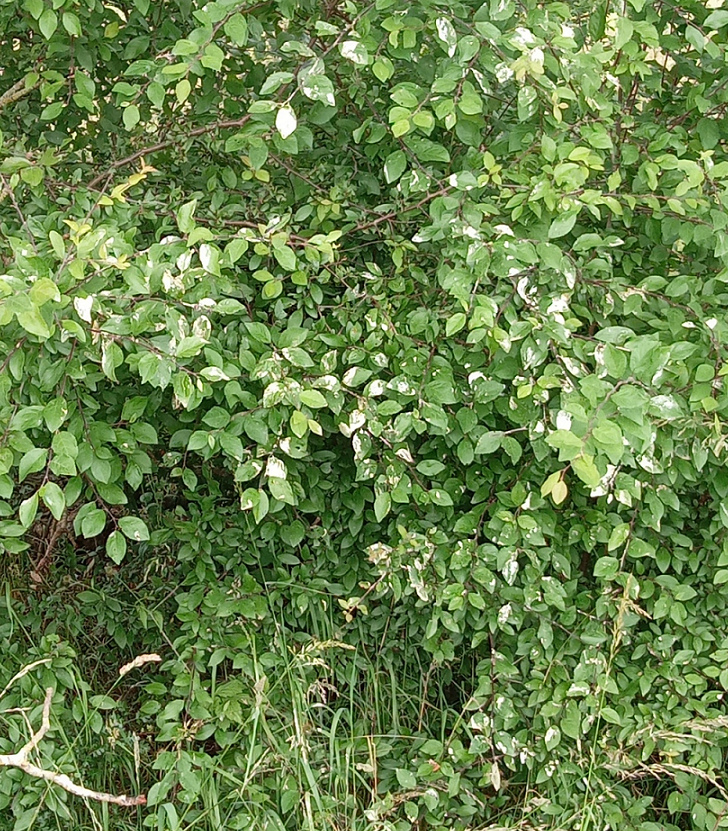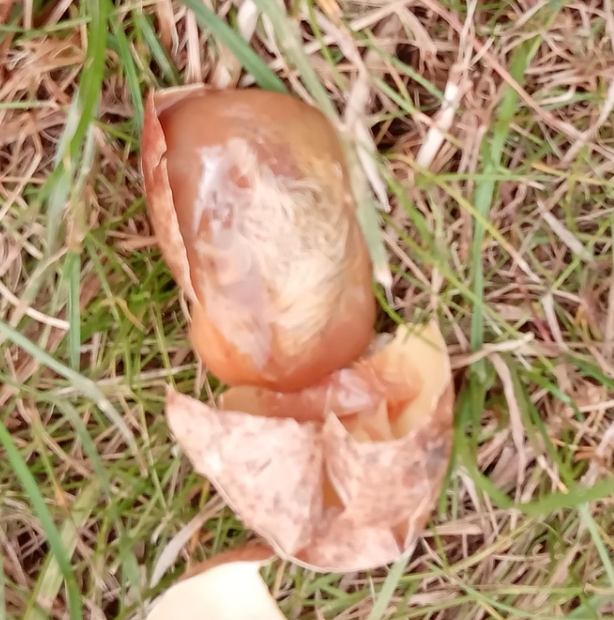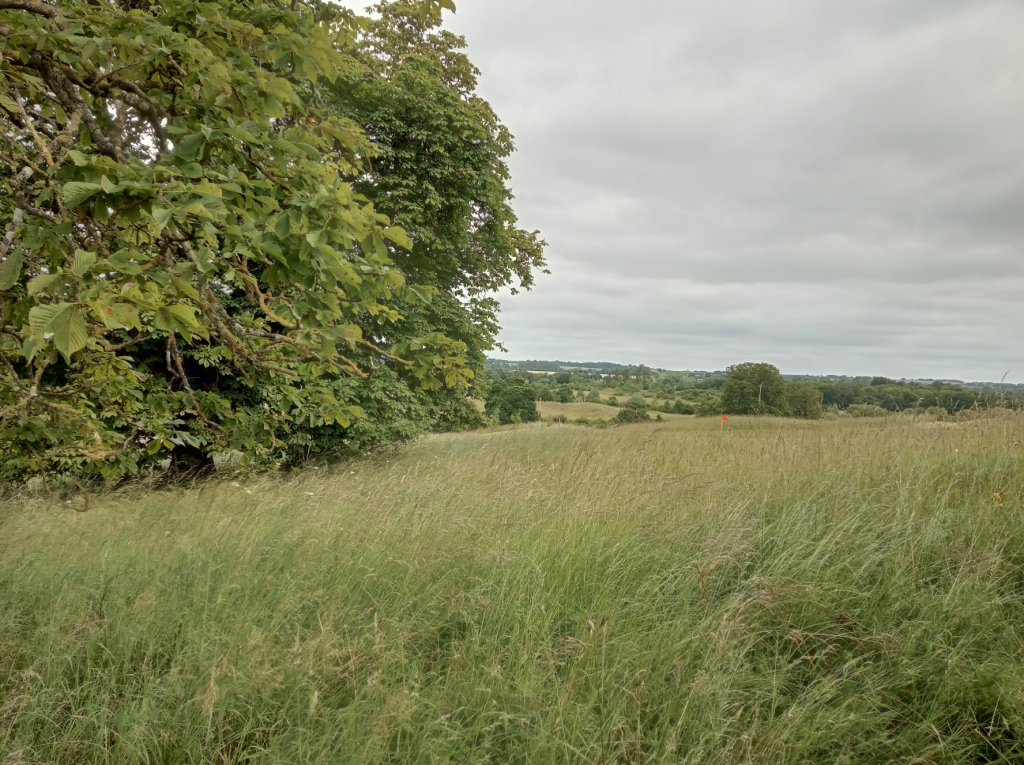Today I met up with Jon Keepen, another of the C-permit holders from the Salisbury Plain Ringing Group, that I have taken on since the retirement of Nigel Lewis. Jon’s role at the golf club, in addition to the usual groundskeeper duties, is as Conservation Manager of the club. In that regard, his duties include the monitoring, cleaning and maintenance of the nest boxes found around the various courses. It was as a part of those duties that he became involved with the ringing of the birds on the estate.
I met Jon and his friend, Keith Wright, also heavily involved with owls and other raptors, rather given away by his Hawk Conservancy Trust polo shirt! Jon’s plan was to visit two Barn Owl boxes and one each of Little Owl and Kestrel boxes, which should have birds ready to ring. He also planned to check on the progress of one Kestrel box where the previous visit had two very young chicks and two eggs, to check on progress, rather than planning to ring them.
The first box we checked was a Kestrel box: it had four healthy chicks, which we ringed, weighed and measured the wing projection on the seventh primary feather. This last is some thing that I personally haven’t done, but I know that the SPRG do it as a matter of course. I restrict myself to describing the entire wing: feathers in pin; feathers short (out of pin, up to one-third emerged), feathers medium (more than one-third emerged, up to two-thirds emerged) and feathers long (more than two-thirds emerged up to fully emerged). Perhaps this is a method of quantifying those statuses. I plan to find out: never to late to learn!
This is Jon processing one of the Kestrel chicks:
Our second stop was a bird with a Barn Owl box on one side of the tree and a Little Owl box on the opposite side. The Little Owl box is something to behold: it is around about 30 years old and is made from old wooden map cases which Nigel Lewis liberated (with permission) from the army way back when. There had been four eggs in the Little Owl box when last checked. Unfortunately, there were only two chicks this time. I was delighted to get to ring my first ever Little Owl:

Little Owl pullus, Athene noctua, looking somewhat suspiciously at my phone!
Next door, in the Barn Owl box, we were lucky to catch the female on the nest, giving Jon a rare opportunity to catch and ring an adult. His permit doesn’t cover adult raptors but mine does and, as I am now his trainer, he could ring it under my supervision. I got the opportunity to actually do a bit of training: showing him the “cuddle” method for ringing and measuring the wings on a large bird with sharp, strong claws and a beak designed for inflicting pain. As well as Mum, we ringed, weighed and measured four chicks. All are developing well but are a fair way off fledging: four, possibly five, weeks before they do. We also recovered one unhatched egg. Muggins knocked it against a tree to open it to check whether there was any sign of development. It just exploded and my hands were covered by an evil smelling residue. Fortunately, Jon had some very handy wet wipes in his bag!
Our next box was the bonus box: a Kestrel box which Jon thought the occupants would be too young to ring yet. It was quite obvious that there was activity in the box, as the photo of the bush underneath the box can attest:

Clearly the parents have shown them the right toilet etiquette: better out than in.
The young were, in fact, surprisingly well developed. In the box were four young, with feathers medium, and two cold eggs. This time, rather more carefully than me, Jon opened both eggs. One was, as the Little Owl egg, rancid, runny and very smelly. Sadly, the other contained a dead embryo. Those of a sensitive disposition might like to avoid this next photograph:

Kestrel embryo, Falco tinnunculus
There is no indication of why it failed to continue to develop and then hatch. We know that birds of prey stagger hatching, but this embryo had definitely stopped developing weeks ago and was certainly not viable.
Our final box was a Barn Owl box. We were expecting two youngsters but in fact found three. They were very advanced and cannot be more than a couple of weeks, possibly less, from fledging:

Keith holding a Barn Owl, Tyto alba, definitely close to fledging. If you look at the head (the owl’s not Keith’s), it is just growing the final juvenile plumage.
So, we spent some three hours visiting five nest boxes and processing eight Kestrel chicks, two Little Owl chicks, one Barn Owl adult and seven Barn Owl chicks. Very pleasant.
This golf club is part of a larger estate, and has a lot of varied habitats. The owls and Kestrels seem to be doing particularly well: the first Barn Owl box had a well-stocked larder. The birds in the second were so big that they must be scoffing everything that parents can catch. There are huge expanses of rough, with a wide variety of flowers and grasses. Lots of habitat for prey species, lots of hunting habitat for the predatory species.

The view immediately adjacent to the second Kestrel box.
Jon has a total of 3 x Kestrel boxes, 3 x Barn Owls and 1 x Little Owl box on the site. Prior to today their biggest haul had been 17 birds. Today we processed 18. What is good about that is that every box produced what it was supposed to and, from a personal perspective, that takes my UK species tally to 111.